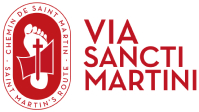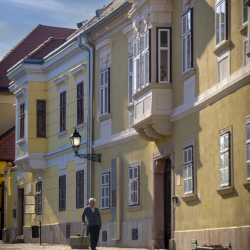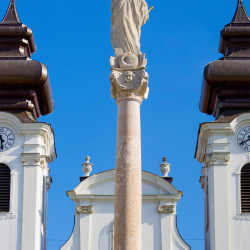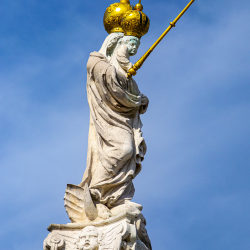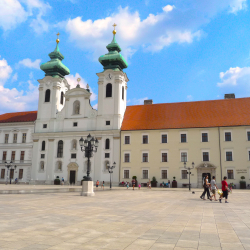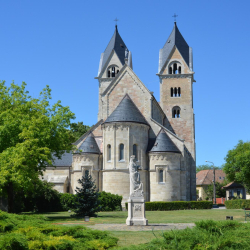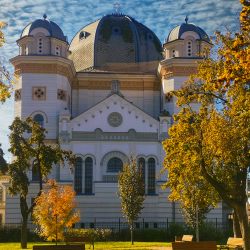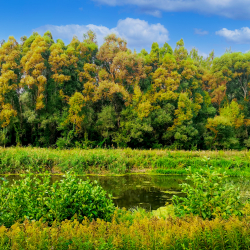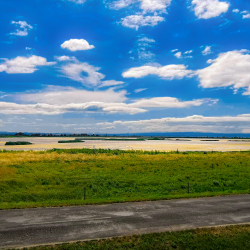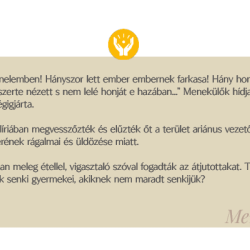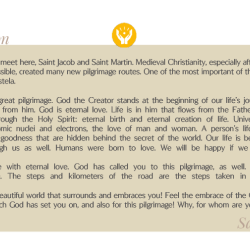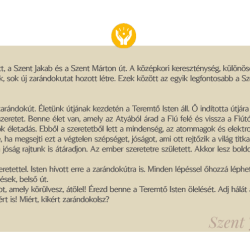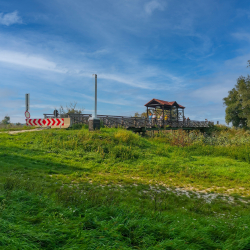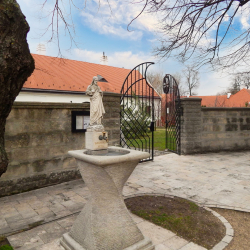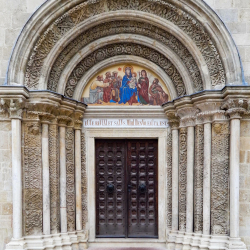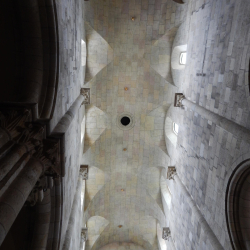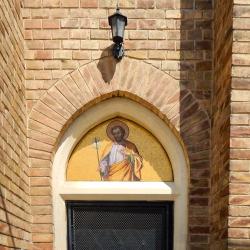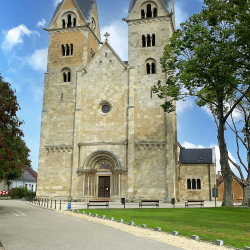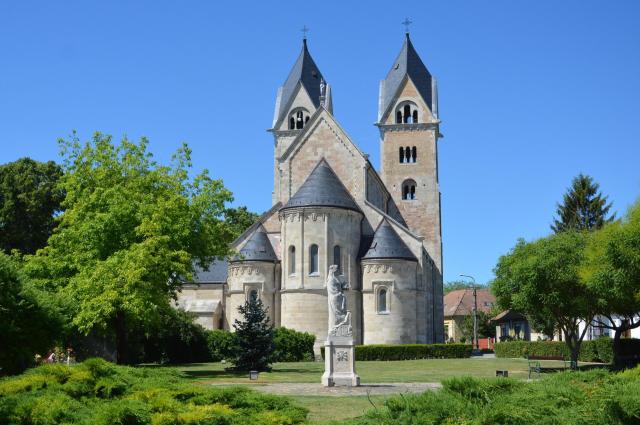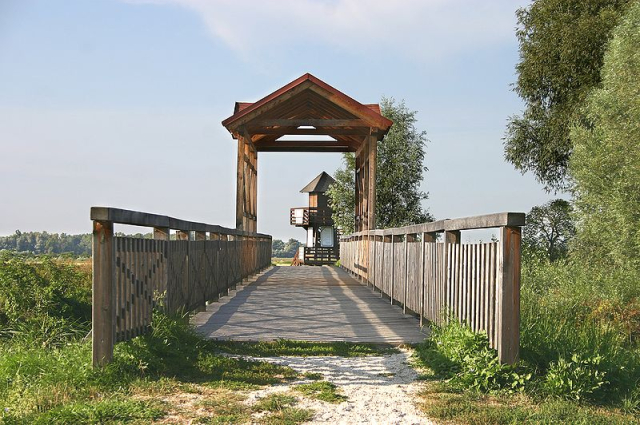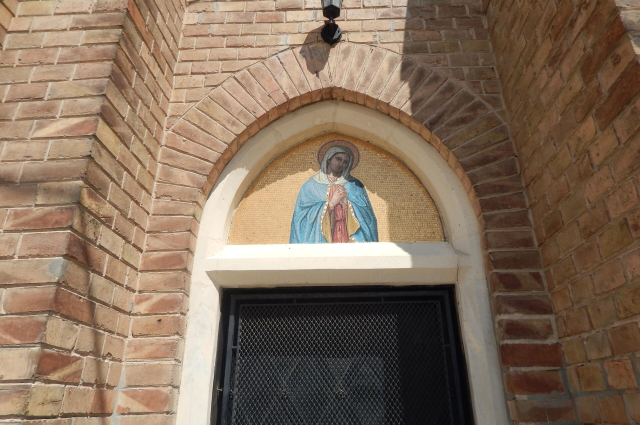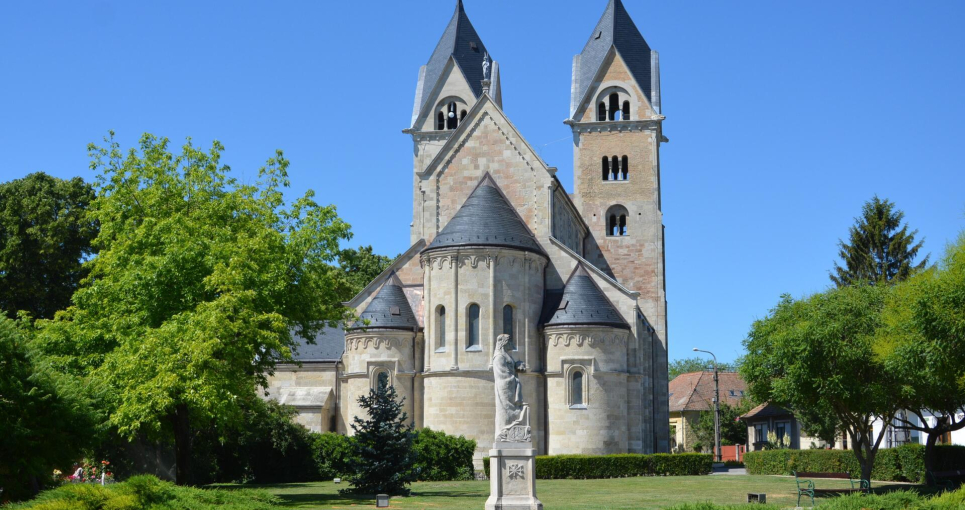
( Day 4) Győr - Lebény - Fertőd

During pilgrimages, there is always a difficult moment when all our strength must be gathered to be able to move on. On the 4th day, we can look forward to a more breath-taking distance, this is perhaps the most difficult day during the pilgrimage. In Lébény, the meeting point of the St. James's and St. Martin's pilgrimage routes; the Hungarian Camino offers inner renewal. Moving further towards the Austro-Hungarian border, in the Hanság region, nature will be our companion, helping us on our spiritual journey. We should prepare with food and drinking water especially well for this stage of our journey.
Suggested possible alternative route – train + bicycle:
Starting from Pannonhalma, we can return to Győr by train together with our bicycle. By changing trains at the Győr train station, you can comfortably cover a smaller part of the distance (20 kms, to Lébény) by train or bike transport. It is worth getting off the train to Mosonmagyaróvár at the Öttevény station, or, in the case of other shuttles, at the Lébény -Mosonszentmiklós stop. In this case, we should also be well prepared with food and drinking water.
More details about the route
Starting from Győr, or cycling just a few kilometres from the railway stations, we arrive in Lébény, where the church in the centre of the town, built in 1212, dominates the space with its lean towers, and its squat, powerful mass, attracting our attention. Many interesting legends are associated with the construction of St. Jacob's Church, such as several versions of "The lambs turned to stone" or the tale of the stones bought for lambs/, which is also proof of how important a role it played in the lives of the locals from its construction throughout its history.
LEGEND
Legend has it that there was nothing to build the church on, in a swampy place surrounded by water and forest, and no stone for a seven-day walk. So building materials had to be brought from far away. But the most pious and elderly monk set out on a journey and returned with a huge flock of sheep. After an all-night vigil and prayer, the monks and the faithful were astonished to see early in the morning that the sheep had turned to stone. It was from these stones that the monks built the temple that still stands before us today.
The church with a history full of difficulties and twists and turns is worth taking a look at from the outside and then walking around. We find the architectural features of the Romanesque style, such as the semi-circular closing of the towers and the twin windows. The church is guarded by the watchful eyes of the gargoyle statues, the part between the columns is filled with extremely rich carvings of tendrils and acanthus leaves. Entering the church, we are greeted by spaces overflowing with dignity and solemnity, and we can also see depictions of events in Hungarian history, the saints of the Árpád House on the walls.
The local religious community provides accommodation for pilgrims, and they are also happy to lead spiritual exercises on site if required. The visitor centre was built on the foundations of a part of the medieval Benedictine abbey building, which was converted into a parish in 1838. The centre welcomes pilgrims and tourists, who can also visit the relic of St. James, the martyr of the apostles.
Lébény
Spiritual provision
|
|
Saint Jacob Church |
Following the signs on the SacraVelo bike path, we can ride westward all the way to Osli. We pass through Bősárkány, where it is worth taking a look at the public sacral statues. When we reach the village of Osli, to the north next to the field, a calm and quiet landscape surrounds us on the road through the forest, all the way to the Austrian-Hungarian border, where we reach the dirt bike path marked EuroVelo 13. Here we wander into the territory of the Fertő-Hanság National Park, a small river on one side, while the forest borders our route on the other, which exudes peace and tranquillity.
As a border river, the main Hanság Canal separates Austria and Hungary, but the Andau Bridge connects it and ensures passage between the countries. Today, the bridge is a historical monument and a temporary border crossing. However, its significance changed in 1956. It is said that "this bridge was the most insignificant small structure in the world, which then, by a whim of fate, became one of the most important bridges in the world". All this is not an exaggeration, since a real exodus took place here in November 1956, as almost 70 thousand Hungarians left the country across the Mosontarcsa Bridge.
Andau
Spiritual provision
 |
There are so many escapes in human history! How many times has man become man's wolf! The poem by Kölcsey, or National Anthem has become a tragic reality in the lives of many of our compatriots: "he looked everywhere and did not find his home in this country..." This place is a bridge for refugees, a path for refugees. So many hearts were almost broken as they were walking along this path.
Martin also had to escape several times. In Illyria, he was flogged, and driven away by the Arian leaders of the area., He had to leave Milan, as well, due to the slander and persecution of Auxentius, the teacher of the Arians.
On the other side of the bridge, many Austrian homes welcomed those who went over it with warm food and comforting words. Can I also be a refuge for the castaways of life, for those who are nobody's children, who have no one left? |
The path of refugees |
Leaving the Andau bridge, we cycle on along the canal on the Hungarian side, then turn off towards the paths provided by the forest. We can follow several signs to our daily destination; Fertőd. You can also look at the EuroVelo13 signs or the signs to help you to cycle around Lake Fertő via Sarród. We can rest on the plain called Mexikópuszta (the Mexican Desert), there is a lookout and resting place awaiting cyclists overlooking the reeds. We can also catch a glimpse of the wildlife of Lake Fertő, as the great egret or the red heron fly between the reeds and the muddy lumps of the lake. After the rest, there are not many kilometres left to arrive and then lay down our heads for sleep after the long day in Fertőd.
- Duration: 7 hour(s)
- Length: 86,4 km
- Difficulty: Hard
| Area: | Velo Martini |
| Típus: | Cycling routes |
Szolgáltatás Stop point
Stop point - Lébény - St James Church
Lébény - Szent Jakab templomThe Benedictine monks settled in Lébény in the Árpád era. The abbey is already mentioned in a document dated 1199. The church at...
MoreStop point - Andau - Mosontarcsa bridge
Andau - Mosontarcsai hídThe bridge is not actually in Mosontarcsa, but 10 km south of the village on the Austrian-Hungarian border. The tradition of its...
MoreStop point - St Andrew the Apostle Church
Fertőd - Szent András Apostol templomThe foundations of the first church of Süttör, dating back to the 12th century, were discovered in 1906 on Jakabsziget, on the...
More